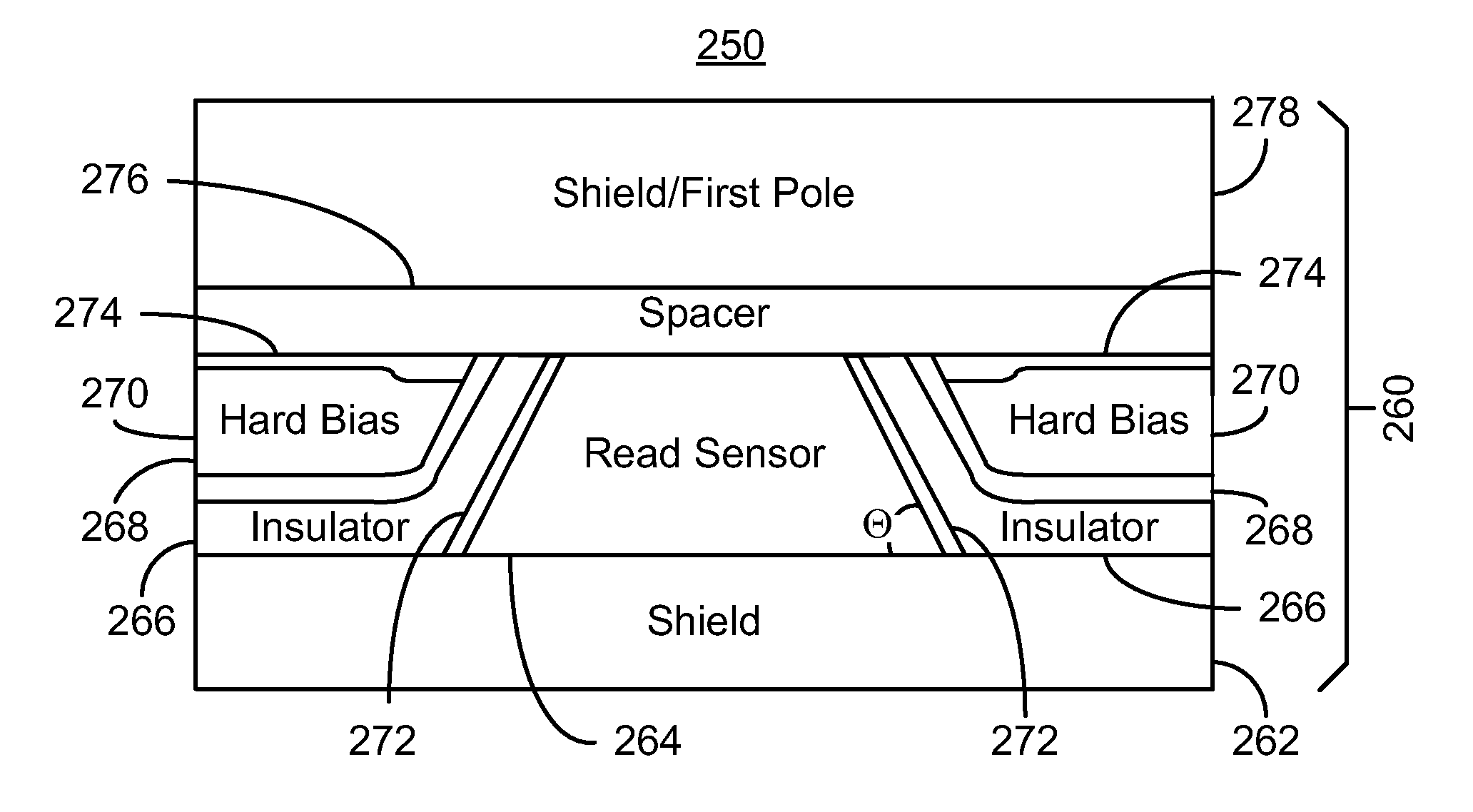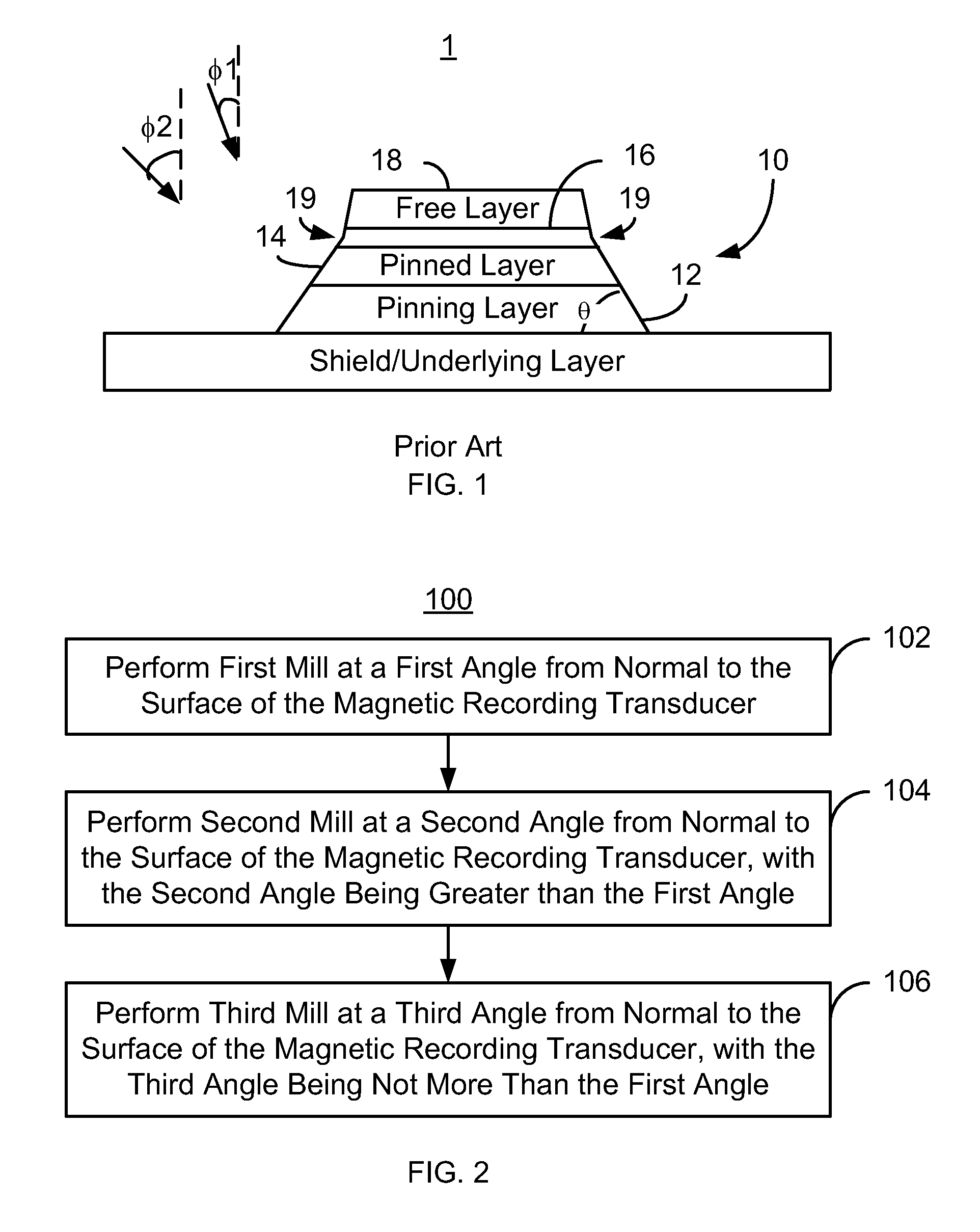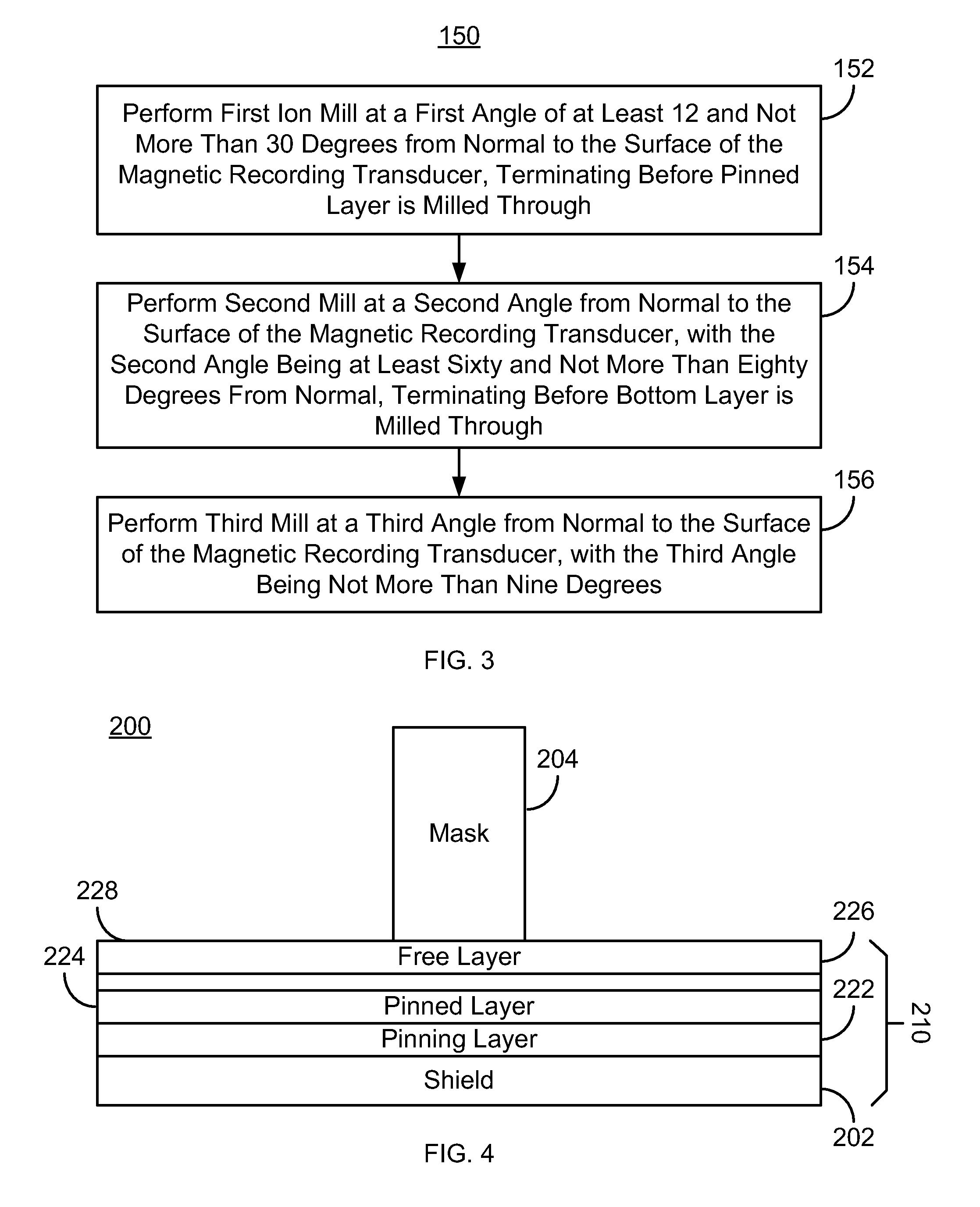Method and system for defining a magnetoresistive junction
a technology of magnetoresistive junction and method, which is applied in the field of method and system for defining a magnetoresistive junction, can solve the problems of oxide layer, adversely affecting the performance of the magnetoresistive junction, damage to the layers in the stack,
- Summary
- Abstract
- Description
- Claims
- Application Information
AI Technical Summary
Benefits of technology
Problems solved by technology
Method used
Image
Examples
Embodiment Construction
[0015]FIG. 2 is a flow chart of an exemplary embodiment of a method 100 for defining a magnetoresistive junction. For simplicity, some steps may be omitted. The magnetoresistive junction may be part of a read transducer (not shown in FIG. 1). The read transducer may be part of a merged head that also includes a write transducer (not shown in FIG. 1) and resides on a slider (not shown in FIG. 1). The method 100 also may commence after formation of other structures of the read and / or write transducer. The method 100 is also described in the context of providing a single magnetoresistive junction. However, the method 100 may be used to fabricate multiple magnetoresistive junctions at substantially the same time. The method 100 is also described in the context of particular layers. However, in some embodiments, such layers may include sub-layer(s) and the magnetoresistive junction may include additional layers. For example, a free or pinned layer may be a synthetic layer including multi...
PUM
| Property | Measurement | Unit |
|---|---|---|
| thick | aaaaa | aaaaa |
| thick | aaaaa | aaaaa |
| width | aaaaa | aaaaa |
Abstract
Description
Claims
Application Information
 Login to View More
Login to View More - R&D
- Intellectual Property
- Life Sciences
- Materials
- Tech Scout
- Unparalleled Data Quality
- Higher Quality Content
- 60% Fewer Hallucinations
Browse by: Latest US Patents, China's latest patents, Technical Efficacy Thesaurus, Application Domain, Technology Topic, Popular Technical Reports.
© 2025 PatSnap. All rights reserved.Legal|Privacy policy|Modern Slavery Act Transparency Statement|Sitemap|About US| Contact US: help@patsnap.com



